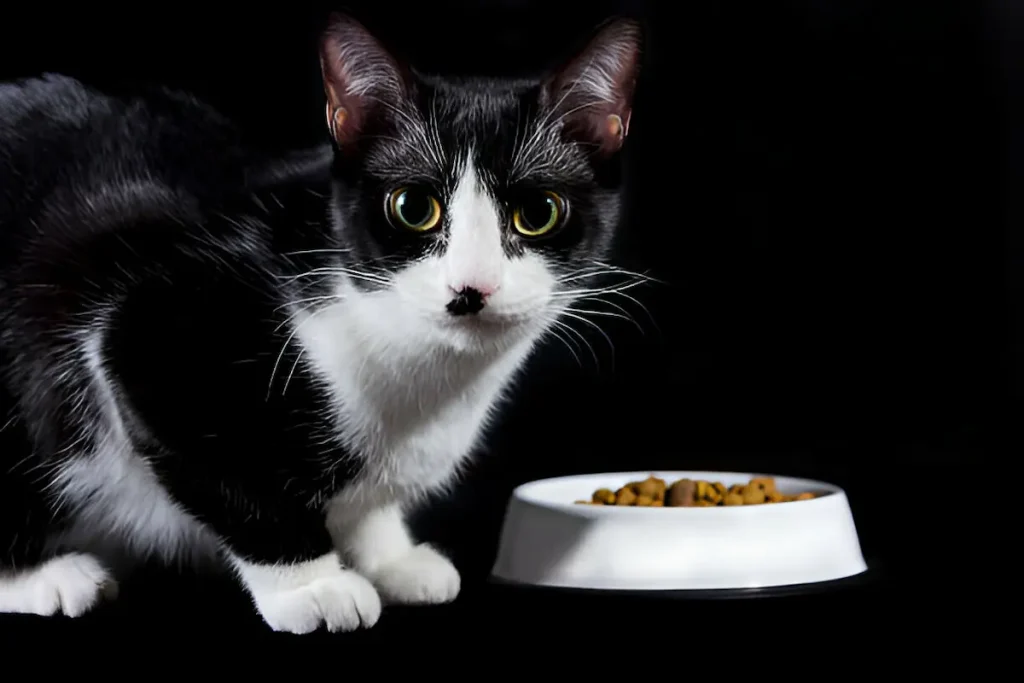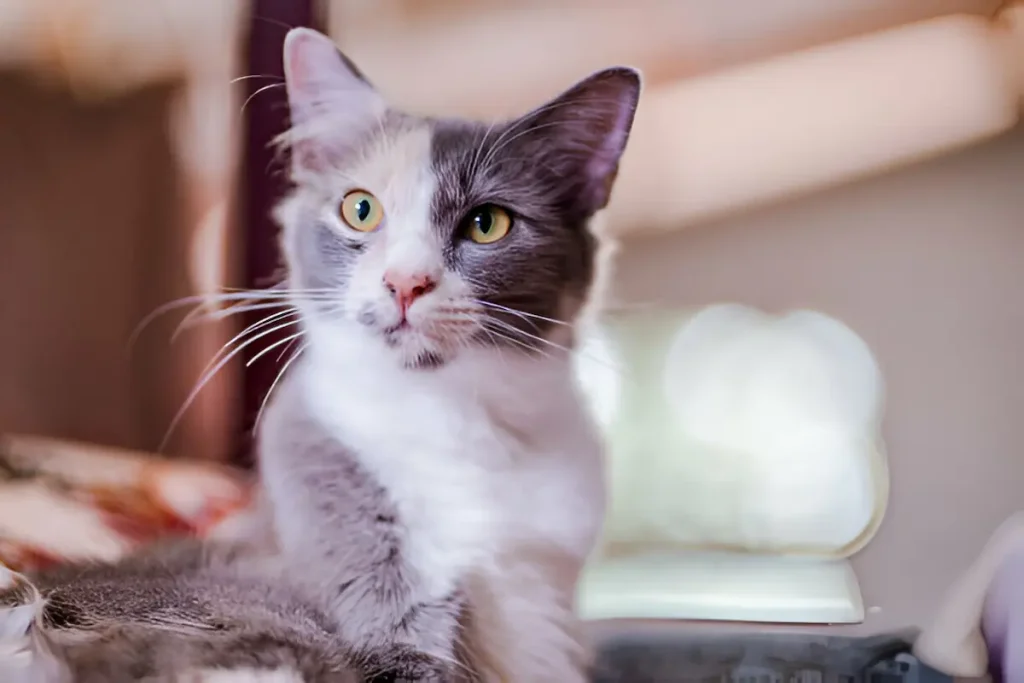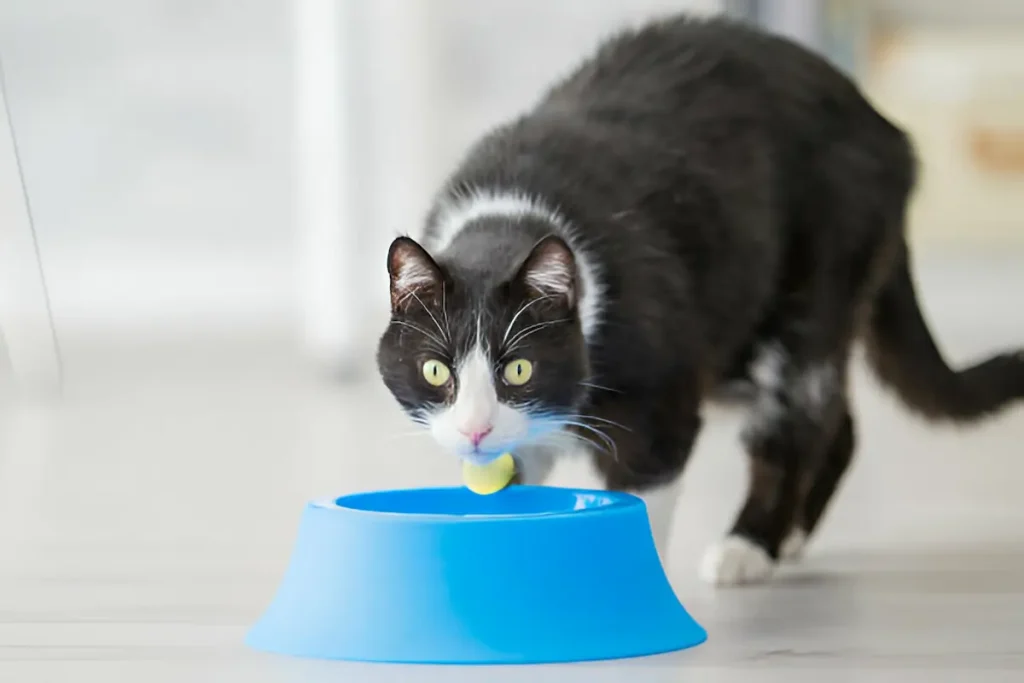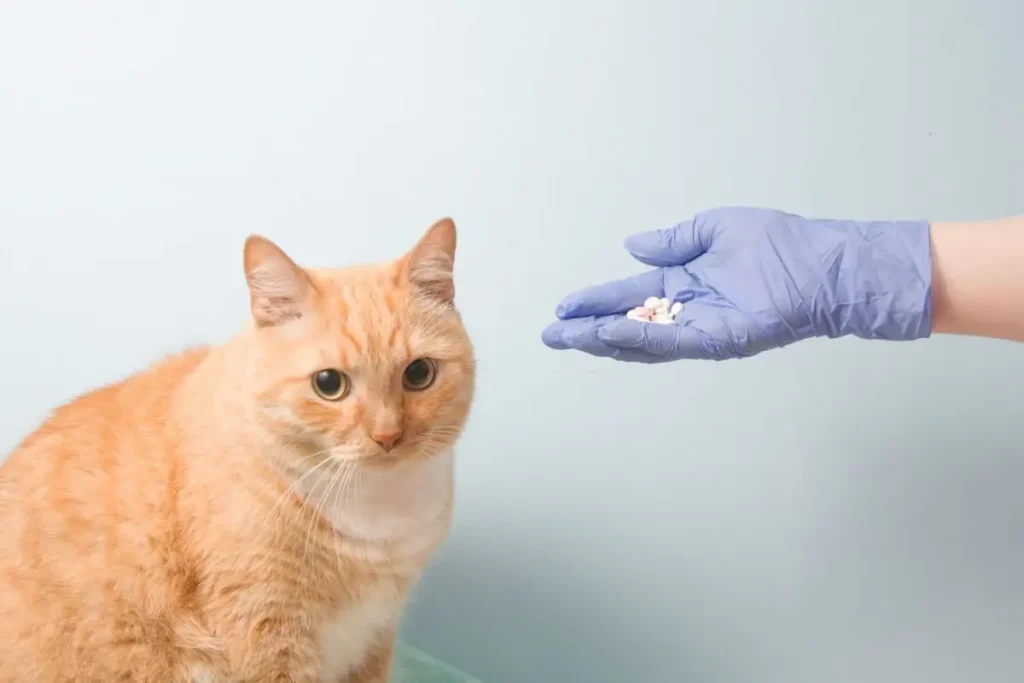Cat a Raw Diet: Are raw food diets good for cats? A raw diet requires raw animal products rather than dried or canned foods. Choosing cat food can be overwhelming, especially when we have to worry about commercial pet food recalls.
Some owners feed their cats diets prepared at home so they know exactly what is in their cats’ food. These homemade diets can be cooked or raw. Many owners choose a raw diet that mimics a cat’s natural diet in the wild.
What is a raw diet for cats?

A raw diet for cats involves feeding raw animal products. This includes meat made from muscles, entrails, and bones. This type of diet is sometimes referred to as a “BARF” diet, which stands for “bones and raw foods” or “biologically appropriate raw foods.”
The ideal raw diet for cats is made according to a carefully designed recipe. Many cat owners choose to prepare these diets themselves at home, but commercial options also exist.
If you choose to feed your cat a raw diet, it should be deemed complete and balanced by a veterinary nutritionist. Cats who eat an unbalanced diet are at risk for a variety of health problems.
Related: Can Cats Eat Lettuce? Is Lettuce Safe For Cats?
Are raw food diets safe?

It’s important to know that feeding your cat raw food comes with some risks. Raw foods can contain pathogens such as Salmonella and E. coli, which can lead to serious, life-threatening infections.1 Cooking food eliminates most of these pathogens, which is why people tend to cook our food.
Cats typically digest raw foods better than humans because they have shorter and more acidic digestive tracts. Many pathogens pass through a cat without any problems. Most cats can tolerate raw food, but people with health problems (such as immune-mediated diseases) may require cooked food.
Perhaps the biggest risk when feeding and handling raw meat is cross-contamination. Feeding your cat a raw food diet can expose you and others in your household to dangerous pathogens.3 Pathogens can remain on preparation surfaces, food bowls, in the cat’s feces, and even on your cat (particularly the facial area).
Cats living in households with immunocompromised people should not be fed a raw diet. They should also be avoided in homes with small children and/or the elderly.
Although it is impossible to eliminate all risks, there are some ways to be safer by feeding your cat a raw food diet:
- Prepare food in an enclosed area of the house. Thoroughly clean and disinfect when finished
- Wear gloves when handling raw meat.
- Treat frozen foods when possible.
- Use meat ingredients from a reliable source
- Feed your cat in an easy-to-clean place (no carpets or upholstery nearby)
- Disinfect feeding bowls immediately after feeding.
Bones are another safety concern when it comes to raw food diets. Some small whole bones or pieces of bone can cause complications such as gastrointestinal blockages, mouth injuries, and airway blockages. If animal bones are included in your cat’s raw food diet, they should be ground.
How to prepare a raw diet for your cat

It is important that you find an expert to help you develop a complete and balanced diet that will truly benefit your cat. Your veterinarian may also recommend specific supplements to ensure your cat is getting the nutrients he needs to stay healthy.
The ingredients used in a raw food diet may include:
- Raw muscle and organ meats (good sources include poultry, rabbit and fish)
- Raw bones, ground
- egg
- Supplements (often necessary)
You will likely need the following equipment and supplies to prepare the raw food:
- A large cutting board that can be washed in the dishwasher.
- meat grinder
- Scissors for birds
- Stainless steel or glass mixing bowls
- Disposable gloves (latex or nitrile)
- Storage containers (some people use ice cube trays or small freezer-safe containers)
- Space for freezer and refrigerator
Preparing a raw diet at home can take some time, so most owners prefer to prepare and keep frozen enough for several weeks.
A complete and balanced diet of raw foods
One of the biggest mistakes owners make on raw food diets is not making sure the diet is complete and balanced.1 Some people simply eat “everything with meat and bones” or a variety of meats without paying attention to calories, fats, proteins, and nutrient content. Don’t assume that your cat will get everything it needs for good health by simply feeding it “as much meat as it wants.” Over time, an incomplete diet can cause serious health problems for your cat.
You may think that random raw meat is healthy because stray cats and stray cats can survive on it, but it’s important to remember that wild animals have a shorter life expectancy than domestic animals. Part of this is due to diet. That’s why it’s important to follow a veterinarian-approved recipe that is complete and balanced.
When developing your cat’s raw diet, consult your veterinarian about recipes that provide a complete and balanced diet for your cat.2 Keep in mind that many veterinarians do not recommend a raw diet due to the risks involved. If you really want to try a raw diet and your vet is not at all flexible about raw diets, look for a vet who has experience with raw diets. Better yet, look for a veterinary nutritionist with experience in raw diets.
Commercial raw food for cats
If you can’t take the time to develop recipes and prepare raw foods at home, you can try one of the many commercial raw food diets. Raw food advocates often consider commercial raw foods to be inferior to those prepared at home. However, they are considered healthier than feeding dry food.
Commercial raw food diets are usually frozen or freeze-dried to reduce pathogens. Keep in mind that safe handling precautions should still be taken with these diets to avoid cross-contamination. Ask your veterinarian or pet nutritionist for help finding the right commercial diet. Ensure it is considered complete and balanced according to AAFCO standards.
Examples of raw food diets
- Chicken: Fresh chicken is an important part of any raw food diet. It is an excellent source of lean protein that gives your cat strength and energy. It is also low in carbohydrates, which means it does not cause obesity problems or digestive problems.
- Boneless Beef – Beef will make your carnivorous cat lick his lips. Raw ground beef is easy to prepare and easy to digest. Rich in protein and taurine, it helps improve eyesight, keep your heart strong, and boost your immune system. It’s fattier than other meats, so it’s delicious, but portion control is important.
- Guts: Guts can be considered a raw superfood for cats. They form an essential part of the raw food diet as they provide minerals and nutrients not found in muscle meat. The liver is a great source of protein and iron as well as contains vitamins A, D, E, and K. It is better to serve it in small quantities to avoid vitamin A toxicity. Heart tissue contains high levels of taurine and is, not surprisingly, good for improving heart health.
It is usually recommended to feed your cat between 2% and 4% of its total body weight per day. So if your cat weighs 5kg, you should give him between 100 and 200g of raw meat.
Are Raw Cat Food Diets the Same as the BARF Diet for Cats?
The acronym BARF is sometimes used to describe a version of homemade or commercially available raw cat food. BARF stands for “biologically appropriate raw food” or “bones and raw food”.
BARF advocates often emphasize including raw bones and internal organs in your foods rather than simply adding raw meat to other ingredients to create a balanced diet. The pros and cons of raw BARF and non-BARF raw cat foods are similar.
Is Raw Cat Food Better Than Other Cat Food?
Nutritionally inadequate cat foods are common, and this applies to both processed cat foods (canned, dried, etc.) and Raw Cat Food Diets.
Many of the benefits often attributed to feeding cats a raw diet could be achieved simply by switching to a higher quality, more biologically appropriate cat food.
Here are some factors to consider and how different diets stack up.
Water content
Cats should get most of their water directly from their food. While dry cat food has a very low water content, canned cat food can provide as much, if not more, water than a diet of raw cat food.
High-quality ingredients and digestibility
Both raw and cooked food can be prepared with ingredients of different quality. Raw is not synonymous with “high quality” or “high digestibility.”
Cooking actually improves the nutritional value of some foods. For example, many types of raw fish contain thiaminease, an enzyme that breaks down thiamine. Cats who eat a diet primarily of raw fish are at risk of thiamine deficiency, which can lead to loss of appetite, seizures, and death. Cooking breaks down thiaminase, making these types of seafood safe for cats.
Nutritional value
No scientific study has ever shown that raw cat food diets provide better nutrition for cats than other types of cat food.
Of course, a high-quality raw diet would be nutritionally superior to a lower-quality processed food, but they could reap similar benefits by switching to a high-quality canned cat food, for example.
Commercial Raw Cat Food vs. Homemade Raw Food for Cats
Raw cat food comes in many different forms. Some pet owners prepare raw food for their cats at home. Others choose commercial raw cat food diets, usually sold as frozen raw formulas or freeze-dried raw formulas.
Other options are also available such as: B. Premixes of vegetables, vitamins, and minerals to which raw meat can be added, or ready-made raw diets for animals that can be purchased from local butchers. Which option is the best?
FAQs about a Cat a Raw Diet
Are raw diets good for cats?
Raw food is usually contaminated with pathogens (bacteria, parasites) that can make your cat sick. These pathogens (e.g. Salmonella, E. coli, Listeria, Campylobacter) can also pose a health risk to humans.
Do cats poop less on raw diet?
Raw-fed cats have smaller, firmer stools than cats that eat kibble or canned food, and they defecate less frequently (usually every 1 to 4 days). However, they should still produce nice, firm stems and defecate regularly.
Are raw diets safe?
In the short term, the raw food diet is unlikely to pose any major health problems. However, you may face some problems if you follow the diet long-term. These may include a lack of calorie and protein intake.
How to feed a cat a balanced raw diet?
The most important part of a raw food diet for cats is the intestines such as the liver, kidneys, and heart. They are rich in vitamins A to E and provide essential nutrients that cats cannot produce themselves. Vegetables like pumpkin, carrots, and kale can also provide dietary diversity.
raw cat food
homemade cat food
what to feed cats
how to cook for your cat
best cat food
instinct raw cat food
best wet cat food
feline nutrition
Article sources
- Davies, R. H. et al. Raw Diets For Dogs And Cats: A Review, With Particular Reference To Microbiological Hazards. Journal Of Small Animal Practice, vol 60, no. 6, 2019, pp. 329-339. Wiley, doi:10.1111/jsap.13000
- Feeding Your Cat. Cornell University College Of Veterinary Medicine.
- Gyles, Carlton. Raw Food Diets for Pets. The Canadian Veterinary Journal, vol. 58,6 (2017): 537-539
- Avoiding Raw Food In Cats. VCA Animal Hospitals.


